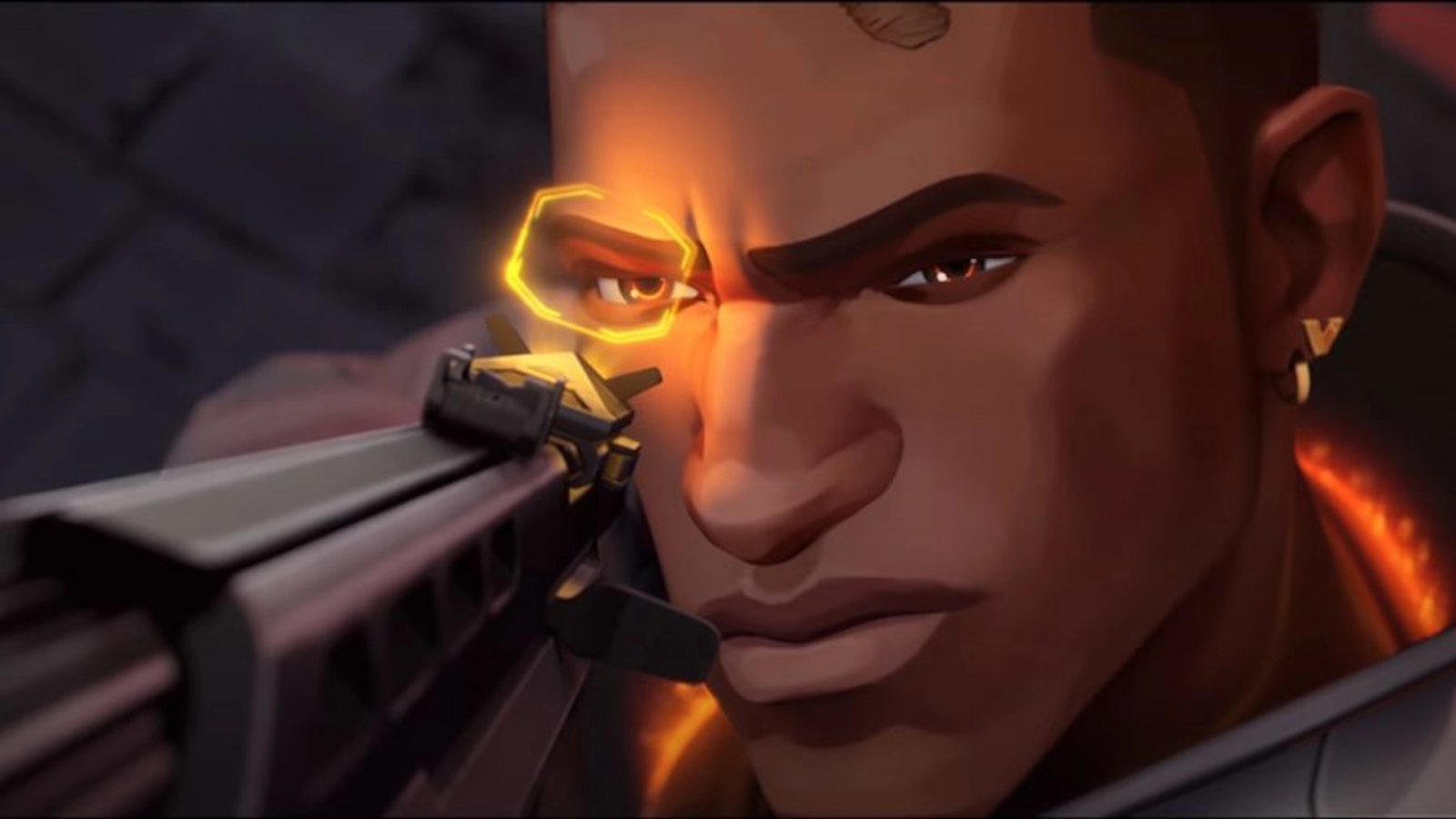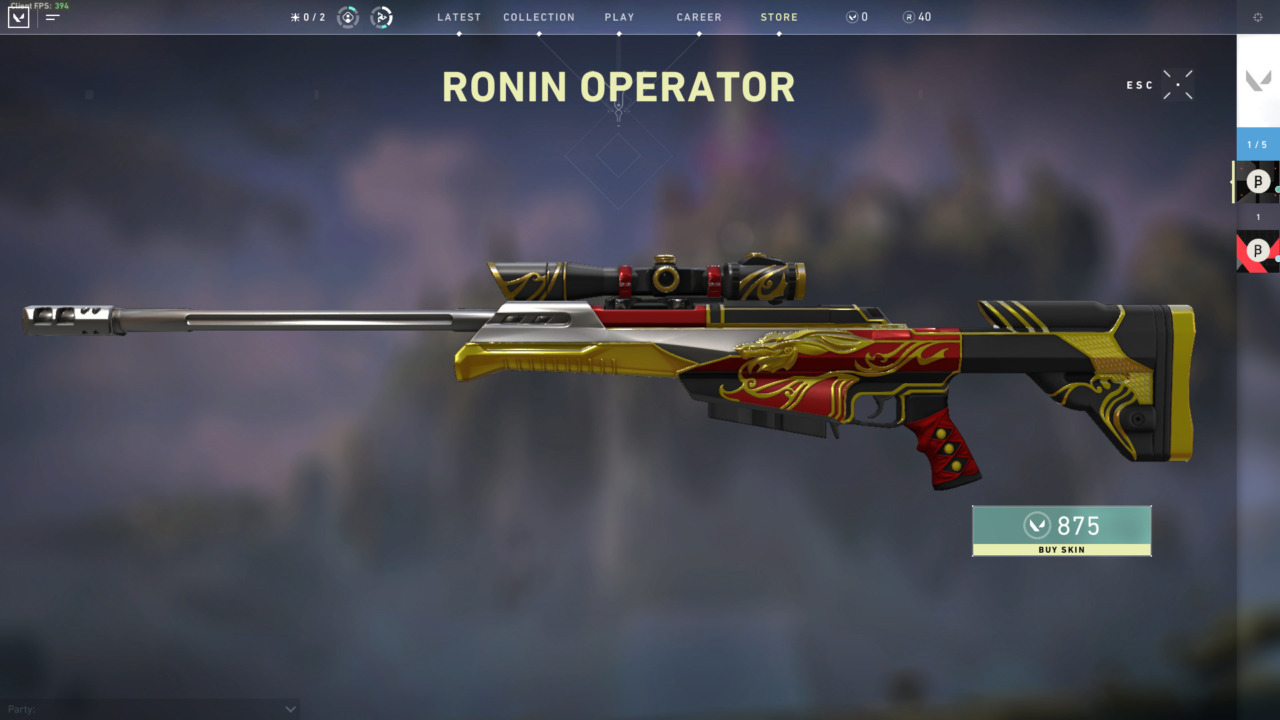Valorant's Operator isn't overpowered, players just need more options
Complaining about snipers: a longstanding FPS tradition.

It's been almost a month since competitive mode was introduced to Valorant, and while everyone has been focused on climbing rank (or flopping) there has been a weapon slowly on the rise, influencing higher level matches and shifting the way people play the game. From pro players popping off, to tons of forum posts complaining, to one of the key developers at Riot Games acknowledging it, it's clear that something is up with the Operator (or the OP, fittingly).
It's natural for metas to form in competitive games. When a weapon or technique is advantageous, people notice it and latch on, forcing others to adapt or get cheesed repeatedly. The OP taps into the longstanding distaste some players have for one-hit-kill sniper rifles. Boasting a dual zoom scope with the longest range in game, and a magazine with the highest damage per bullet in game, this weapon can reach players from a decent distance safely.
Sorry I've been a bit quiet on the issue - we've been discussing the "Op meta" and will be continuing to dig into what we think the root causes are and any steps we wanna take to address. I'll share initial thoughts once we get something more firm togetherJuly 13, 2020
It's without a doubt a powerful gun, but remember: it's mostly identical to the AWP, CS:GO's thundering sniper, a legendary rifle that's remained basically intact over two decades in various versions of Counter-Strike, you know, the most popular competitive FPS of our lifetimes. If the AWP isn't OP, and Valorant is balanced similarly to CS:GO, why is the OP OP?
The big difference is that Valorant characters don't have universal access to gear that helps them deal with an OP. In CS:GO, each player can buy one smoke and two flashes to push back against the sniper. In Valorant, only certain characters carry smoking or flashing abilities.
The current best practice to stop an OP in Valorant is to use Controller-type characters with accurate smokes (Brimstone and Omen) and flashes from Duelists and Initiators (Phoenix, Reyna, Breach). These types of abilities can block an OP's vision and allow your team to move up or kick a sniper out of their nest. For the most part these moves are effective, but each round players don't get to use very many of them, and it's common for players to drop utility at the outset of a round, leaving them exposed to late-round OPs.
It's undeniable that the OP is a strong weapon, and can be demoralizing to play against. But blaming the gun—a gun that's basically existed for two decades!—is an oversimplification of the problem. It's powerful, not overpowered. You can't ignore the skill and calm under pressure it takes to wield the OP. You still have to be relatively good at aiming and have a grasp on which angles are strong to hold, and which aren't, to make it useful. I played a match where we fielded 3 OPs and none of them could land a shot. It's also by far the most expensive gun in the game, ringing up at a whopping 4,500 credits, or half of the maximum bank that a player can carry. Buying this gun is a fairly big risk: a dead OP player often finds their weapon in the hands of their enemy the next round.

There's a few routes Riot could go down to tackle this problem in the upcoming patches, and it'll be interesting to see which approach it takes. Riot could make the OP riskier to wield, giving it a slower fire rate or higher price. One thing I can safely say Riot won't do is limit the number of OPs that can be purchased—when a player suggested this on Twitter, a dev replied that it was "100% the opposite way we see this." We'll probably see smaller adjustments to movement speed or fire rate ahead of changes that enhance the few abilities that put OP players at a disadvantage. Whether it's buffing the duration of their effects, or allowing players to have more slots for them, there just need to be more tools available to shut down an OP.
Keep up to date with the most important stories and the best deals, as picked by the PC Gamer team.
A higher-profile solution would be for Riot to equip the next agent (we know that a new character will be added each Act, which are about two months long) with a vision obstruction ability designed for deactivating long range snipers would be one way to shake up the current status of the game, giving space for a new meta to emerge. But given what we know about character development, these agents are created far in advance of their release.
Valorant is still a young game. The fact that styles of play are forming around it is an indication of health. As a League of Legends veteran, I've seen Riot handle some pretty quick re-tunes of characters, abilities, and items that had power problems, so I'm excited to see how they manage this gun over time and in what ways Valorant's meta will continue to evolve. Maybe next season we'll all be running the Bucky shotgun.

Fūnk-é is a Black, non-binary artist and writer+ who loves covering cyberspace communities and the ever evolving culture of videogames. At PC Gamer, Fūnk-é is an SEO contributor who whips up a slice of nice word pie. They never miss the opportunity to emphatically tell empathetic tales. Their favorite games are Mirror's Edge, Disco Elysium, and League of Legends. They will also crush anyone in Super Smash Bros. Ultimate.

